after I stopped by the cernua spot last sunday to get pictures of the tall spiranthes cernua, I went on to camden, ny and a bit north to check on the spiranthes ochroleuca for a native orchid admirer that wanted to come south from canada to take pictures of it. I found that there were quite a few plants on both sides of the road, mostly in full flower and many had a very nice fragrance! I had forgotten about the fragrance, which is different than that of the similar spiranthes cernua. it's more like the floral fragrance that roses can have, but not the traditional rose fragrance that comes to most people's minds. it's nice, but can't name it exactly.. anyhow, cernua usually grows in spots of seeping water in mostly clay-based soils, though it can have sand or silt in with it; ochroleuca here in central ny and in the adirondacks often has more of a sandy component to it that is more acidic or at least less alkaline or neutral. here north of camden, it grows on sandy soil either a few feet above water level, or on sandy banks that have some sort of water movement a bit below the surface. in both areas, it often can be found in some sort of slight shade, whereas cernua is often mostly in full sun. the sandy spots usually have little enough nutrients so that there is little competing vegetation. if you look closely at the pictures of ochroleuca and compare them with the other ones of cernua I've posted, the ochroleuca side sepals can have a gap of a millimeter or two as they spread forward, but then sweep back together again at the front of the flower. also the other petal/sepal structures often constrict at the lip, making it look like it has a tight 'neck'. often cernua flowers sweep open so that there is a widening gap between the side sepals/petals. also the ochroleuca has a creamy yellow color, and even though some forms of cernua can be other than bright white they usually don't approach ochroleuca in the level of yellow in parts of the flower. also ochroleuca spikes often come to a terminal 'point', something that doesn't often appear in cernua spikes as they are developing
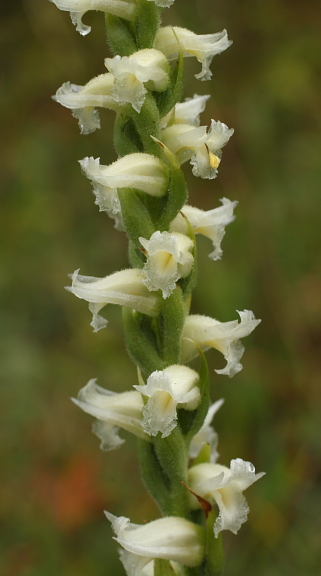 ...
...

in the right picture, if you look at the sideview of a flower, you can see that the upper or dorsal sepal sweeps up then down towards the front of the flower; the lower side sepals move up from the back of the flower, making a close area between the two. for cernua, this gap would widen and not constrict towards the front of the flower (usually, there is probably an exception somewhere)
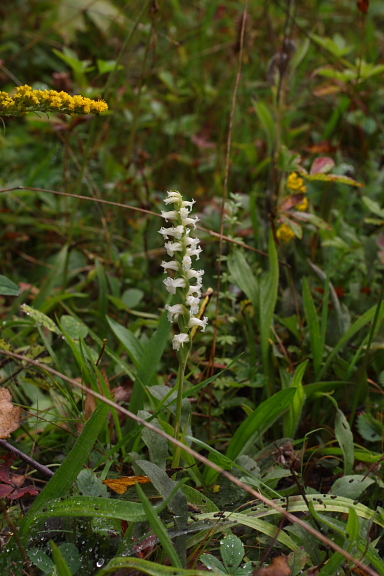 ...
...
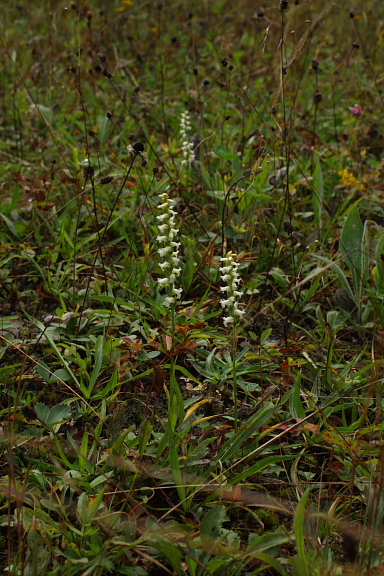
in both pictures you can see the type of plants that are usually found in a sandy, low fertility condition (grey stemmed goldenrod, strawberries, birch trees)
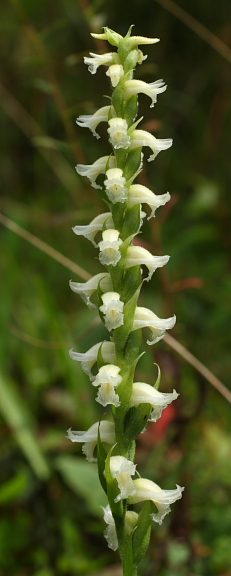 ...
...

the right pic shows a nice clump of over a dozen flowering plants! I think they are seedling either by division of an older plant, or just seed that dropped directly underneath a previous plant. most plants i've seen in one close clump
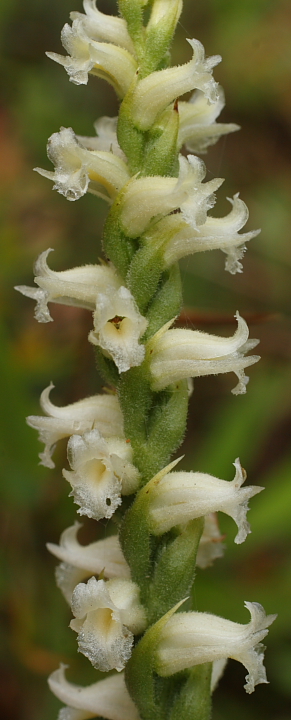
in all pictures you can see the solid creamy color that is the basis for most of an ochroleuca flower. the inside lip can have quite a more solid creamy yellow color


in the right picture, if you look at the sideview of a flower, you can see that the upper or dorsal sepal sweeps up then down towards the front of the flower; the lower side sepals move up from the back of the flower, making a close area between the two. for cernua, this gap would widen and not constrict towards the front of the flower (usually, there is probably an exception somewhere)


in both pictures you can see the type of plants that are usually found in a sandy, low fertility condition (grey stemmed goldenrod, strawberries, birch trees)


the right pic shows a nice clump of over a dozen flowering plants! I think they are seedling either by division of an older plant, or just seed that dropped directly underneath a previous plant. most plants i've seen in one close clump

in all pictures you can see the solid creamy color that is the basis for most of an ochroleuca flower. the inside lip can have quite a more solid creamy yellow color



